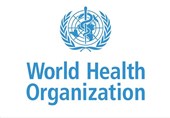Worldwide Coronavirus Cases Cross 36 Million
TEHRAN (Tasnim) – More than 36 million people have been reported to be infected by the novel coronavirus globally and 1,052,602 have died, according to a Reuters tally.
Infections have been reported in more than 210 countries and territories since the first cases were identified in China in December 2019.
Meanwhile, British Prime Minister Boris Johnson’s government is considering additional local COVID-19 restrictions for parts of northern England as the second wave of the novel coronavirus accelerates, Housing Secretary Robert Jenrick said on Thursday.
New coronavirus cases are rising by about 14,000 a day in the United Kingdom and millions of people are living under a patchwork of different restrictions, though there is growing alarm about the economic cost of such rules.
“The virus is rising, in terms of the number of cases, quite significantly in the north-west, in the northeast and in a number of other cities like Nottingham,” Jenrick told Sky.
“We are currently considering what the right action would be to take in those places,” he said. Asked if the actions would be similar to those in Scotland, he said a range of actions were being considered — including a more consistent approach.
While coronavirus infections in Ukraine began surging in late summer, and the ripples are now hitting towns like Stebnyk in the western part of the country, where Dr. Natalia Stetsik is watching the rising number of patients with alarm and anguish.
“It’s incredibly difficult. We are catastrophically short of doctors,” says Stetsik, the chief doctor at the only hospital in the town of 20,000 people. “It’s very hard for a doctor to even see all the patients.”
The hospital is supposed to accommodate 100 patients, but it’s already stretched to the limit, treating 106 patients with COVID-19.
In Hawaii, despite increasing coronavirus cases across the US, officials hope to reboot tourism next week by loosening months of economically crippling pandemic restrictions, including a mandatory 14-day quarantine for all arriving travelers.
The plan, which was postponed after the virus surged in the summer, will allow Hawaii-bound travelers who provide negative virus test results within 72 hours of arrival to sidestep two weeks of quarantine.
But the Oct. 15 launch of the pre-travel testing program is causing concern for some who say gaps in the plan could further endanger a community still reeling from summer infection rates that spiked to 10 percent after local restrictions eased.
State Sen. Glenn Wakai, chair of the Committee on Economic Development, Tourism and Technology, said one problem is that the tests are not mandatory for all. Travelers can still choose to not get tested and instead quarantine for two weeks upon arrival, which means those with a negative test could get infected on the plane.
“They’re going to come here with this false sense of belief that, ‘Hey, I got tested, Hawaii, I’m clean. Here’s my paperwork. Let me enjoy my Hawaiian vacation,’ not knowing that the person in seat B on a five-hour flight gave them the coronavirus,” Wakai said.






